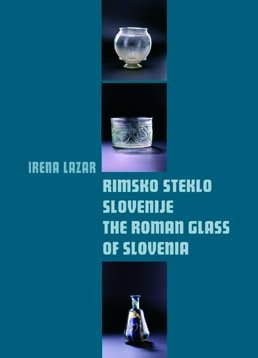 Institute of Archaeology Institute of Archaeology |
[Slovenian] |
| Home | Members | Programme | Projects | Laboratory |
| Database | Publications | Library | Links | Archive |
The monograph Roman Glass of Slovenia, differs only in minor details from the doctoral dissertation of the author. The first part is dedicated to the typological and chronological presentation of the Roman glass from the territory of modern Slovenia; the second one is a presentation and review of local glass production in the Roman period on Slovene territory. The introduction represents the terminology that is used and glass making techinques, along with results of the most resent research. The products are first clasified into three major groups based on the techique of manufacture (vessels made in a mould, mould-blown vessels, free-blown vessles). It is further classified into ten groups of vessels according to their use. The dating of individual forms was wherever possible determined on the basis of grave units and other dated contexts from Slovenian sites. The earliest Roman glass material is known from the end of the 1st century BC. The main merchant center was Aquileia where products of the northern Italian workshops were gathered. The first products were mostly luxury items, and only the development of free-blowing spread glass products among all strata of the population. The amount of glass material from the second half of the 1st century increased enormously in comparison to the beginning of the century. Most of the blown glass was of an everyday utilitarian character. In the 2nd and 3rd the range and number of shapes and types grew and part of the demands was certainly satisfied by products of local workshops (Celeia, Poetovio). Most of the products, and particularly those of better quality, are still imported; at the end of the 2nd century also from the Rhine valley and Pannonia. It is noticeable that during the 4th century the use of glass vessels was drastically reduced. Some forms are no longer in use, poor economic conditions influenced also glass industry. In the 5th century the vessel glass assemblage is almost entirely restricted to drinking vessels and objects connected with liturgical activities. Local glass industry existed in Roman period on the territory of modern Slovenia from the 2nd century onwards and lasted, as proved by the finds from Celeia and Poetovio, through the 2nd and 3rd century. The most extensive discoveries are known from Poetovio, where the proofs of glass production are known from different parts of the town (Hajdina, Rabelčja vas, Panorama). The remains of six glass furnaces prove the existence of glass production and enable the reconstruction of the appearance of the glass furnaces. The remains of raw glass, moils, glass lumps, distorted vessels and fragments of crucibles are direct proof that glass-workers were active in the town. Judging from the remains of the glass products, the furnaces in Ptuj must have operated in the 2nd and 3rd centuries. The book is printed in two languages with the Slovenian and English texts flowing in parallel columns. 2003, (Opera Instituti Archaeologici Sloveniae, 7), 264 pp, 78 b/w or color photos + 8 plates + 4 Appendices, 20 x 29 cm, hardcover, IISBN 961-6500-18-X. |
